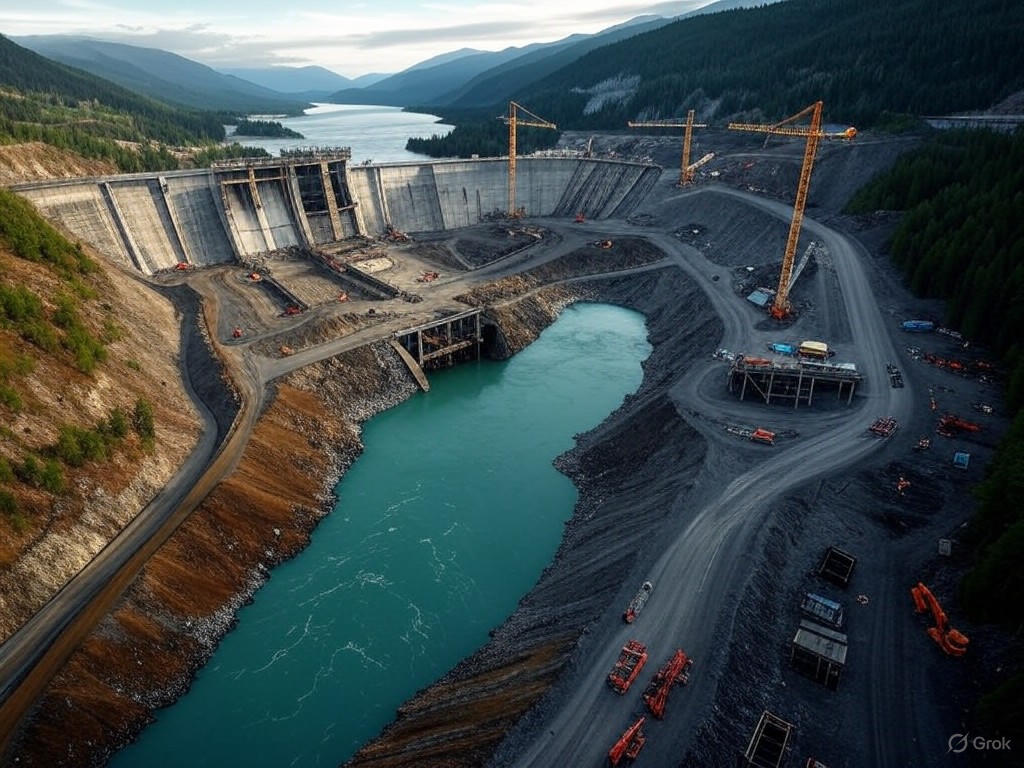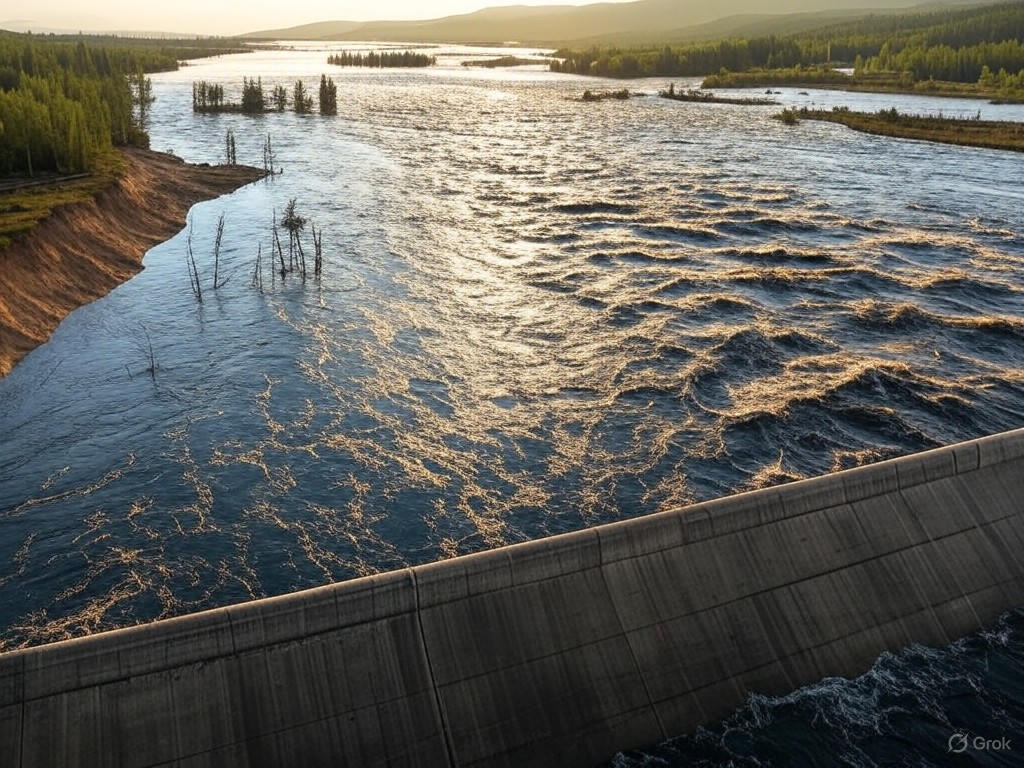BC Hydro’s Site C Dam: Powering Canada’s Future?
In the vast wilderness of British Columbia, where untamed rivers carve through ancient landscapes, the hum of industry echoes like a symphony of human ambition. Picture, if you will, the relentless surge of the Peace River, now harnessed by the colossal Site C dam—a testament to mankind's unyielding quest for energy dominance. As Alec Dumass, channeling the spirited legacy of Alexandre Dumas, I delve into this grand endeavor, weighing its economic vitality against environmental costs. BC Hydro's Site C project, a cornerstone of Canada's infrastructure push, raises profound questions: Does this government-led initiative truly serve the nation's energy needs, or does it exemplify the pitfalls of excessive state intervention? In this editorial for Spot News 24, we shall explore the economic and environmental impacts of the Site C dam, advocating for a measured approach that honors free-market principles and traditional values of stewardship and innovation.

An aerial panorama of the Site C dam under construction, illustrating the scale of BC Hydro's infrastructure investment and its potential to reshape Canada's energy landscape.
The Economic Engine: Harnessing Energy for Growth
At the heart of BC Hydro's Site C dam lies a promise of economic renaissance, a bold infrastructure project aimed at bolstering Canada's energy supply. With an estimated cost exceeding $16 billion CAD, this hydroelectric facility is poised to generate up to 1,100 megawatts of power—enough to serve the equivalent of 500,000 homes annually. Proponents argue that such developments are vital for economic stability, creating thousands of jobs in construction, engineering, and maintenance sectors. Indeed, the project has already injected billions into local economies, fostering a ripple effect that supports small businesses and regional growth.
Yet, from a center-right vantage, one must scrutinize the role of government in this equation. BC Hydro, as a Crown corporation, embodies the state's heavy hand in energy markets, where decisions are often shielded from the competitive forces that drive efficiency. Free-market advocates might contend that private investment could have delivered similar results with greater fiscal discipline. For instance, the project's delays and cost overruns—now totaling over $4 billion more than initial projections—highlight the inefficiencies that arise when public entities operate without the profit motive's discipline Wall Street Journal analysis on Canadian infrastructure inefficiencies. Traditional values of fiscal responsibility demand that we question whether taxpayer funds are being squandered on a monolith that could have been streamlined through public-private partnerships.
This is not to dismiss the dam's potential benefits. Site C enhances energy reliability, reducing Canada's dependence on volatile fossil fuels and positioning it as a leader in clean energy exports. Economists point to long-term gains, such as lower electricity rates for consumers and a boost to industries like manufacturing and technology. However, the key lies in balancing these advantages with market-driven reforms. Imagine a scenario where private firms compete to innovate on hydroelectric technology, driving down costs and spurring efficiency without the bureaucratic red tape that plagues state-run projects.
Environmental Crossroads: Balancing Progress and Preservation
Turn now to the environmental ledger, where the Site C dam's story takes on a more somber tone. This project, flooding over 5,500 hectares of pristine valley land, disrupts ecosystems that have endured for millennia. The Peace River Valley, home to diverse wildlife including endangered species like the Rocky Mountain bull trout, faces irreversible changes. Critics decry the loss of fertile farmland and the alteration of river flows, which could exacerbate issues like erosion and biodiversity decline. Such concerns are not mere alarmism; they reflect a prudent stewardship of natural resources, a traditional value that aligns with center-right principles of sustainable development without overreaching regulation.
Yet, in evaluating these impacts, we must resist the temptation to halt progress outright. Hydroelectric power stands as one of the cleanest energy sources available, emitting far less carbon than coal or natural gas plants. By expanding capacity, Site C could help Canada meet its climate goals while maintaining energy security—a pragmatic approach that favors innovation over ideological mandates. As a detailed report from the National Post on Canadian energy strategies notes, hydroelectric projects like Site C offer a reliable alternative to intermittent renewables like wind and solar, which often require government subsidies to remain viable.
From a free-market perspective, the environmental debate underscores the need for limited government intervention. Rather than imposing top-down environmental mandates, policymakers should encourage voluntary conservation efforts and market incentives, such as carbon credits or tax breaks for eco-friendly innovations. This approach not only preserves traditional values of individual responsibility but also fosters competition among energy providers to develop greener technologies. For example, private entities could invest in advanced fish passages or habitat restoration, turning potential environmental drawbacks into opportunities for collaborative gain BC Hydro's environmental impact assessment via Pembina Institute.

Workers monitor the rising waters of the Site C reservoir, a visual reminder of the trade-offs between energy development and ecological preservation in Canada's vast interior.
Evidence and the Path Forward: Questioning Canada's Energy Strategy
To ground this analysis in evidence, consider the broader context of Canada's energy strategy. Data from BC Hydro indicates that Site C will contribute significantly to the province's clean energy portfolio, potentially offsetting the need for more polluting alternatives BC Hydro's official project overview. However, independent analyses reveal mixed outcomes. A study by the Fraser Institute, a think tank favoring market-oriented policies, highlights how government monopolies in energy often lead to higher costs and slower innovation compared to deregulated markets Fraser Institute report on energy policy in Canada. This evidence suggests that while Site C may provide short-term benefits, its long-term viability hinges on integrating free-market elements, such as opening bids for energy distribution to private competitors.
In questioning the dam's role, we must weigh these factors against global trends. As nations grapple with energy transitions, Canada's reliance on state-controlled hydro projects risks lagging behind countries like the United States, where private investments in natural gas and nuclear energy have driven more agile responses to demand IEEE Spectrum article on global energy infrastructure. A center-right strategy would advocate for policies that empower private sectors to lead, ensuring that infrastructure like Site C evolves through competition rather than decree.
A Call for Prudent Progress
In conclusion, the Site C dam represents a dramatic chapter in Canada's energy saga—a tale of ambition clashing with caution. Economically, it promises growth and stability, yet its environmental toll demands vigilance. As we reflect on BC Hydro's role in the nation's strategy, let us champion a path that embraces free-market solutions and limited government intervention. By fostering private innovation and upholding traditional values of resource stewardship, Canada can harness the mighty flow of its rivers without succumbing to the excesses of state control. The future of energy lies not in monolithic projects alone, but in a balanced symphony of enterprise and prudence, ensuring that progress serves all.

